Horror in Paradise Read online
Page 8
Mrs. Massie’s name was not printed, but within a few days the five suspects were identified in the press. The two Japanese, Horace Ida and David Takai, had never been in trouble with the police, but the other three had. Joe Kahahawai had been jailed earlier in 1931 for assault and battery. Henry Chang and Benny Ahakuelo were convicted in 1929 of attempted rape, and they served some months in prison before they were paroled. This clinched the case against them, so a good many people thought.
While the prosecutor’s office was preparing its case, the suspects were tried in the newspapers; in fact “local boys” as a group were tried. Every stock character in the drama of outraged sexual morality made an appearance in the letters-to-the-editor column—“Indignant Citizen,” “Vigilante,” “Mother Of Three Daughters,” and all the rest. Every imaginable act of lust was discussed and every imaginable punishment was considered—whipping, sterilization, emasculation. As the Advertiser said, the “gangsters” of Hawaii deserved nothing less; they were beasts at once primitive and degenerate, less civilized than the aboriginal blacks of Australia or New Guinea.
Mrs. Massie’s mother, Grace Hubbard Bell Fortescue, arrived at Honolulu before the trial began. Lieutenant Massie had sent her a hasty telegram, and she took the first ship to the islands. As soon as Mrs. Fortescue heard her overwrought daughter’s story, she began to worry that Thalia might be pregnant—a terrible prospect. Mrs. Fortescue arranged for an examination and an operation. The results showed no sign of pregnancy.
Among the interested parties in the case was Rear Admiral Yates Stirling, Commandant of the Fourteenth Naval District, which included Pearl Harbor. Stirling was an officer, a gentleman, and a Southerner. He had spent part of his career fighting revolutionaries in the Philippines and Chinese warlords on the Yangtze River, and he found little to impress him in the East. Hawaii, where not only Filipinos and Chinese but Japanese and native Hawaiians lived in what seemed to him disgusting closeness to white men and women, impressed him even less. He had nothing but scorn for “enthusiastic priests of the melting-pot cult,” and even on the most beautiful Hawaiian day he could not get the “sordid people” of the islands out of his mind for more than a few minutes at a time. Now that the local boys had shown their true sexual colors, Stirling was caught between two duties: his responsibility as an officer serving the United States government, and his responsibility to his private code of honor. His first inclination, as he said, was to “seize the brutes and string them up on trees.” But he realized that the law must take its course, “slow and exasperating” though it was bound to be.
When the case finally came to trial in November, 1931, the selection of a jury took two days. The difficulties were obvious. White jurors, haoles, might find the defendants guilty because of their race; Oriental or Hawaiian jurors might do the opposite. The Navy had a special interest in the verdict, too, and the Navy was one of the best customers of Honolulu’s businessmen. If a juror worked for a firm that did business with the Navy, how would he vote? In the end a jury was chosen consisting of six white men, one Portuguese, two Japanese, two Chinese, and one Hawaiian.
The case for the prosecution was shaky, to say the least. The defendants had undergone a thorough physical examination when they were arrested, and their bodies and the clothes they were wearing that night showed no sign that they had had sexual intercourse. Neither, for that matter, did Mrs. Massie’s body or her clothes show that she had been raped. That she had been beaten was clear; but beyond that very little was clear, even though her story of what happened after she left the Ala Wai Inn got more and more detailed the more often she told it. In court she identified four of the five defendants, more than she had managed to do before, but of course they were the only suspects she was ever shown, and she had never been asked to identify them in a lineup. She also got four of the five digits in the number of Ida’s car correct, but again she had the help of the police in this. Her beads and cigarettes and other belongings were found in a clearing off the Ala Moana, and tire marks from Ida’s car were found there too, but this did not mean much either, because some of the detectives assigned to the case had driven Ida’s car to the spot to conduct their searches. The defense leaned heavily on the element of time. It was unlikely that five men could have raped Mrs. Massie a total of six times, as she said they did, when she said they did, and then driven to the other side of town in time to get into a near collision at the comer of King and Liliha Streets when this was known to have happened. To be sure, no other suspects had come to light, but then the police were not looking for other suspects.
The jury stayed out from the afternoon of Wednesday, December 2, until the afternoon of Saturday, December 5, when sounds of fighting were heard in the jury room. The foreman came out to say that they could not agree. Judge Alva E. Steadman told them to try again, but at ten o’clock on Sunday night the foreman sent out a note saying that the jury found it impossible to reach a verdict. Steadman declared a mistrial. A new trial would have to be arranged, and in the meantime Ida, Kahahawai, Chang, Ahakuelo, and Takai were freed on bail.
As Admiral Stirling heard it, “The vote of the jury began and remained to the end, seven for not guilty and five for guilty, the exact proportion of yellow and brown to whites on the jury.” In Stirling’s view the mistrial was a plain miscarriage of justice. The defendants were not men “who might be given the benefit of a reasonable doubt.” Stirling was sure he spoke for most good Navy men. They were under discipline, but all the same the admiral “half suspected” that he would hear any day that one or more of the defendants had been found “swinging from trees by the neck” in Nuuanu valley. Stirling was half right in his half suspicions. Six days after the court case ended some men from the submarine base found Horace Ida in downtown Honolulu, bundled him into their car, drove over the Nuuanu Pali to windward Oahu, took their leather belts, and beat and kicked him unconscious.
Mrs. Fortescue was brooding over the unsatisfactory verdict too. She had rented a house in Manoa valley, and Thalia was living with her while Lieutenant Massie was on sea duty. The Navy assigned a guard to watch the house at night: Machinist’s Mate Albert O. Jones, whose job at the submarine base was to train the boxing team. Jones had two pistols, a .45 service automatic and a .32 automatic he bought himself. Mrs. Fortescue also bought a gun, a .32 revolver. All over town, in fact, white women, and especially Navy wives, were taking out licenses for pistols. Mrs. Fortescue, however, had something special in mind when she armed herself. She wanted to get a confession from one of the beasts who—she was sure—had raped her daughter.
She did not take long to work out a plan. The five defendants still had to report each day to the Judiciary Building in downtown Honolulu. Mrs. Fortescue spent a morning there, watching them come and go one by one. She took her son-in-law into her confidence, and then told Jones what she proposed to do. Jones got a member of his boxing team, Fireman First Class Edward J. Lord, to join in the plot. Mrs. Fortescue made up a document meant to look like a summons. Part of it was handwritten, the rest was clipped arbitrarily from a newspaper headline: “Life Is A Mysterious And Exciting Affair, And Anything Can Be A Thrill If You Know How To Look For It And What To Do With Opportunity When It Comes.” That night Mrs. Fortescue studied a photograph of Joseph Kahahawai’s “brutal, repulsive black face,” so that she would recognize him instantly when she saw him.
The next morning, Friday, January 8, 1932, Lieutenant Massie and Edward Lord drove to the Judiciary Building, in a rented Buick; Mrs. Fortescue and Albert Jones followed in Massie’s Durant roadster. When Kahahawai came out of the courthouse, Jones waved the summons at him, pushed him into the Buick, and climbed in after him. Massie drove back to Manoa valley, with Mrs. Fortescue and Lord following in the other car. At Mrs. Fortescue’s house Jones and Massie threatened Kahahawai with terrible things if he did not admit that he was a rapist. Massie, as good a Southern gentleman as Admiral Stirling, had been sexually humiliated, and Mrs. Fortescue, herself a Southern gentlewo
man, was proud to see her son-in-law, “small, erect, dominating,” striking terror into the heart of the dark-skinned Kahahawai. She looked away for a second (so she said later), and while her back was turned a pistol went off. She looked again to see Kahahawai on the floor, shot through the chest. Within a few minutes he was dead. The men stripped the bloodied body and put it in the bathtub, and tried to think what to do next.
Kahahawai’s cousin, Edward Ulii, had been at the Judiciary Building when Kahahawai was taken away in Massie’s Buick. Ulii heard something about a summons, but he noticed that the car did not go in the direction of the police station. Ulii went to the police himself, and a radio call was put out for the Buick. Less than half an hour later Detective George Harbottle (who had worked on the Massie case), saw the car heading along Waialae Avenue to the east of Honolulu, with Mrs. Fortescue at the wheel and the rear-window shade pulled down. Harbottle went after it. Some miles out of town he passed the Buick, got out of his car, and signaled Mrs. Fortescue to stop. She would not. Harbottle fired two shots and gave chase again. Not far from Hanauma Bay he forced the Buick to the side of the road. He put Mrs. Fortescue, Massie, and Lord under arrest, opened the back door of their car, and saw a white bundle tied with rope. A human leg was sticking Out from under the covering, and it was cold. Kahahawai was on his way to being thrown in the sea.
The three were taken back to Honolulu in a police wagon, with the body of Kahahawai in a wicker basket at their feet, still tied in its covering of canvas and bed sheets. Albert Jones was found at the Massies’ house, drunk, with the fake summons and a spent .32 shell in his pocket. He was arrested, and all four of the conspirators were charged with first-degree murder. Mrs. Fortescue was aghast. “But it wasn’t murder!” she wrote later in a magazine article entitled “The Honolulu Martyrdom,” which cast herself and her family in the role of martyrs. “We had not broken the law. We were trying to aid the law. Without a confession we knew there was no chance of clearing the slime deliberately smeared on a girl’s character.” Perhaps; but Kahahawai had not confessed, and now he was dead. And if his body had been thrown in the sea nothing would have been known about the cause of his death, and that was a question the law was bound to be interested in.
“People who take the law into their own hands always make a mess of it,” said the Honolulu Star-Bulletin. Mrs. Fortescue could only agree. “Now, of course,” she told a reporter not long after the killing, “I realize we bungled dreadfully, although at the time I thought we were being careful.” But what about the unwritten law? Would that excuse Mrs. Fortescue and Thomas Massie their lack of expertise? They could argue that without the rape case there would have been no killing, and even though there was no conviction in the rape case surely there was incitement enough—after all, as Admiral Stirling said, Americans, and especially Southerners, could not be expected to take the violation of their women lightly.
Griffith Wight of the prosecutor’s office was in a difficult position. When he was pressing the case against Kahahawai and his friends for the rape of Thalia Massie he had the support of a good part of the white community. Now he had to convince a grand jury that the respectable white killers of Kahahawai should be brought to trial for kidnapping and murder, and he knew it was asking too much to expect the people who had demanded justice a few weeks earlier to speak in the same firm voice this time. At first the twenty-one grand jurors, most of them white men, reported against indictment. Judge Albert M. Cristy refused to accept their report and sent them back to reconsider their responsibilities. Their next report contained an indictment for second-degree murder.
Mrs. Fortescue, looking for the best attorney possible, settled on Clarence Darrow, easily the most celebrated criminal lawyer in the United States. Darrow was seventy-five years old, in poor health, and long past his best as an advocate; but the weight of his reputation was impressive, and in the limited legal circles of the territory it might be decisive. Darrow looked into the case, professed himself interested in the psychology of a “crime that was not a crime,” agreed to defend all four of the accused, and took ship for the islands in March.
Darrow’s adversary, John C. Kelley of the prosecutor’s office, was a tough and energetic man in his early forties, not easily overawed by reputation; indeed he had something of a name in the territory as a local Darrow. The selection of a jury began on April 4, and as the two men and their juniors went through the ritual of challenges it began to look as if local experience might mean more than a little. Of the twenty-six venire men, only nine were white, and the twelve who survived the attorneys’ challenges made up the usual mixed bag of haoles, Chinese, Portuguese, and Hawaiians.
Once the hearing of evidence got under way, lines formed overnight outside the courthouse, and a place in line near the door was worth fifty dollars in the morning. The best people were willing to pay the price. Their presence gave the proceedings a kind of grisly chic, and the social reporters of the English language newspapers were careful to note who sat where. Almost to a woman the best people were for Mrs. Fortescue; the rest, the locals, were less committed to the idea that an “honor killing” was no crime.
Massie, as the aggrieved husband, took the responsibility for the killing (although Admiral Stirling liked to think Mrs.
Fortescue pulled the trigger out of mother love, and years later Albert Jones said he fired the shot). Massie testified that he was able to remember everything except what happened just before and after the pistol went off. Then, to show why Kahahawai was kidnapped in the first place, Darrow had Thalia Massie tell, all over again, what happened on the night of September 12. Putting the two stories together, Darrow argued that Massie killed Kahahawai in a temporary fit of insanity.
From the first it was clear that Darrow was uneasy with jurors whose faces he could not fathom. No one could play on a jury’s emotions better than he—his towering reputation had been made that way.—but a Honolulu jury was an unfamiliar instrument. Would Hawaiians and Orientals be able to understand that a white man tortured by strain might crack and commit a crime and then have no knowledge of it? The case for the defense hung on that single point.
Darrow retained two psychiatrists, “alienists” as they were called then, to testify that Massie was insane when the shot was fired. One talked about ambulatory automatisms caused by psychological strain; the other talked about changes in the function of the suprarenal glands that might bring on chemical or shock insanity. Kelley also had two specialists, and they said—in their own technical language—that Massie was sane. Most people in the courtroom, and probably the twelve men in the jury box, simply let the big words go by.
Darrow’s summation took almost four and a half hours. It was a classic performance (and, as it happened, Darrow’s last—he never took another courtroom case). “At times,” wrote a reporter, his voice was “as soft as a woman’s. At others, it was like thunder that could be heard a block away. He was eloquent. He was dramatic. He was impressive in his rages, as his 225-pound body crouched and bent and his long, lean arms thrashed through the air. Now and then he brushed away a tear when dwelling upon some tragic part of the evidence.” Darrow had never been unwilling to subordinate strict legalism to the higher law of humanity, and in the past he had often carried juries with him. But this time as he rang the changes on passion and pain, base lust and mother love, he found it hard going. “When I gazed into those dark faces,” he said later, “I could see the deep mysteries of the Orient were there. My ideas and words were not registering.” Mrs. Fortescue saw the same thing. “The stoical Oriental faces betrayed no emotion. Ethnologically and traditionally, white and yellow and brown are races apart. How could such a plea appeal to the six men to whom the white man’s code is a mystery?”
Kelley talked about love too. He observed that the dead man’s parents were in the courtroom. Had Mrs. Fortescue lost a son, or Thalia Massie a husband? No. “But where,” asked Kelley, “is Joseph Kahahawai?” Then he talked about law—which, he said, Darrow had
neglected to do. The “code of the white man,” whatever that was, should not be allowed to usurp the place of the law. The four defendants conspired to kidnap Kahahawai. Kidnapping was a felony. Kahahawai was killed as a result of the kidnapping, and the law called that felony murder.
Judge Charles S. Davis gave his charge to the jury on April 27, the eighteenth day of the trial. They reached their verdict after forty-eight hours. All four defendants were found guilty of manslaughter, and leniency was recommended. On May 4 they were sentenced to ten years at hard labor in Oahu Prison.
They did not go to jail. Under the protection of the high sheriff they left the courtroom and walked across King Street to Iolani Palace, where the governor of the territory, Lawrence M. Judd, had his offices. Darrow went inside with them. Ten minutes later Judd announced that he had commuted the sentences from ten years to one hour, to be served in the custody of the high sheriff.
Robert Lee Eskridge
Wandering Spirits
of Manga Reva
Robert Lee Eskridge, artist and author born in 1891, roved around the world and spent years in Hawaii and the South Pacific. His book Manga Reva (1931) is a valuable account of native life and a source for the bizarre story of Father Honore Laval.
This Catholic priest went in 1834 as a missionary of the Society of Picpus to Manga Reva in the Gambier group. Laval obtained dominance over the chief and began a compulsive building program that lasted more than thirty years. A native police force was organized, which enforced the dictates of the apostle. People were hauled from neighboring islands to slave away, cutting stone blocks and erecting a spreading, 3,400-seat cathedral; churches; a monastery; and a nunnery (in which were immured young Polynesian maidens forcibly enlisted into convent life). As the buildings spread, the people died. A visit from his bishop finally put an end to Laval’s dominance in 1871, and the jungle began reclaiming his monuments.

![[What Might Have Been 02] Alternate Heroes Read online](http://i1.bookreadfree.com/27/what_might_have_been_02_alternate_heroes_preview.jpg) [What Might Have Been 02] Alternate Heroes
[What Might Have Been 02] Alternate Heroes![[What Might Have Been 01] Alternate Empires Read online](http://i1.bookreadfree.com/01/what_might_have_been_01_alternate_empires_preview.jpg) [What Might Have Been 01] Alternate Empires
[What Might Have Been 01] Alternate Empires SEDUCTIVE: A Contemporary Romance Anthology
SEDUCTIVE: A Contemporary Romance Anthology A Year of Love
A Year of Love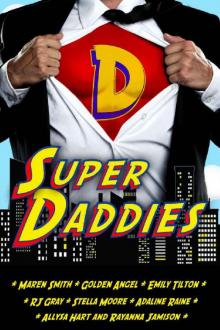 Super Daddies: A Naughty Nerdy Romantic Comedy Anthology
Super Daddies: A Naughty Nerdy Romantic Comedy Anthology Mystical Xmas: Paranormal Romance Anthology Box Set
Mystical Xmas: Paranormal Romance Anthology Box Set![[What Might Have Been 04] Alternate Americas Read online](http://i1.bookreadfree.com/06/what_might_have_been_04_alternate_americas_preview.jpg) [What Might Have Been 04] Alternate Americas
[What Might Have Been 04] Alternate Americas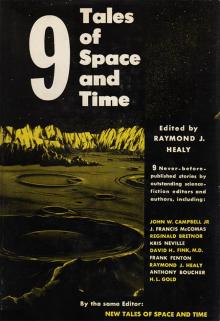 9 Tales of Space and Time
9 Tales of Space and Time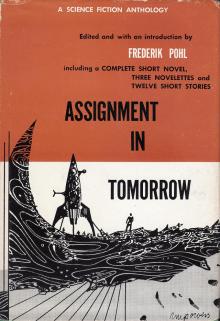 Assignment in Tomorrow
Assignment in Tomorrow![[What Might Have Been 03] Alternate Wars Read online](http://i1.bookreadfree.com/i/03/16/what_might_have_been_03_alternate_wars_preview.jpg) [What Might Have Been 03] Alternate Wars
[What Might Have Been 03] Alternate Wars The Complete Dangerous Visions
The Complete Dangerous Visions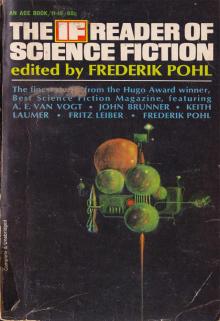 The IF Reader of Science Fiction
The IF Reader of Science Fiction Holiday in the Heart
Holiday in the Heart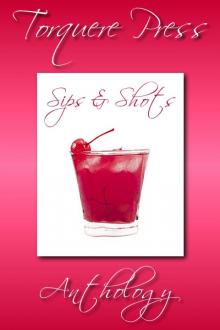 Torquere Press Sips and Shots
Torquere Press Sips and Shots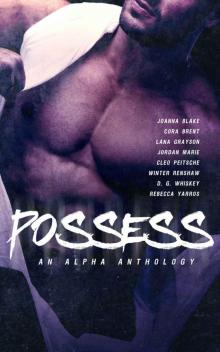 Possess: An Alpha Anthology
Possess: An Alpha Anthology Beyond Control
Beyond Control Bad Boys Under the Mistletoe: A Begging for Bad Boys Collection
Bad Boys Under the Mistletoe: A Begging for Bad Boys Collection Hugo Awards: The Short Stories (Volume 3)
Hugo Awards: The Short Stories (Volume 3) The Second IF Reader of Science Fiction
The Second IF Reader of Science Fiction Astounding Science Fiction Stories Vol 1
Astounding Science Fiction Stories Vol 1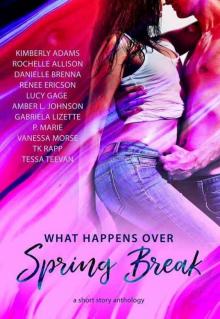 What Happens Over Spring Break: A Short Story Anthology
What Happens Over Spring Break: A Short Story Anthology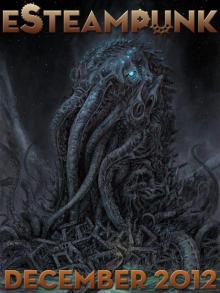 eSteampunk Vol. 01 No. 02
eSteampunk Vol. 01 No. 02 SHADOWRUN: Spells and Chrome (shadowrun)
SHADOWRUN: Spells and Chrome (shadowrun) Dark Tales
Dark Tales Getting Schooled (Craving #9)
Getting Schooled (Craving #9) The Hellfire Book of Beltane Volume One
The Hellfire Book of Beltane Volume One The Alpha's
The Alpha's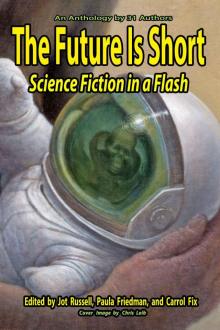 The Future Is Short
The Future Is Short From the Heart: A Valentine's Day Anthology
From the Heart: A Valentine's Day Anthology Reckless: A Bad Boyz Anthology
Reckless: A Bad Boyz Anthology LOL #3 Romantic Comedy Anthology
LOL #3 Romantic Comedy Anthology A Christmas Seduction: A Regency Anthology
A Christmas Seduction: A Regency Anthology All a Cowboy Wants for Christmas
All a Cowboy Wants for Christmas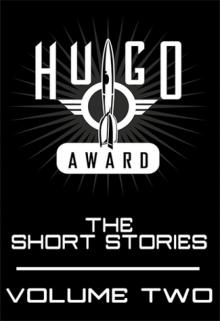 Hugo Awards: The Short Stories (Volume 2)
Hugo Awards: The Short Stories (Volume 2) The Golden Age of Science Fiction Novels Vol 01
The Golden Age of Science Fiction Novels Vol 01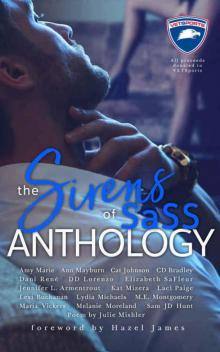 The Sirens of SaSS Anthology
The Sirens of SaSS Anthology Mistletoe & Kisses
Mistletoe & Kisses Explorers of Space
Explorers of Space Time Travel Omnibus Volume 2
Time Travel Omnibus Volume 2 Dead Science: A Zombie Anthology
Dead Science: A Zombie Anthology Beer Goggles Anthology
Beer Goggles Anthology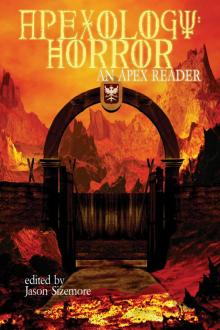 Apexology: Horror
Apexology: Horror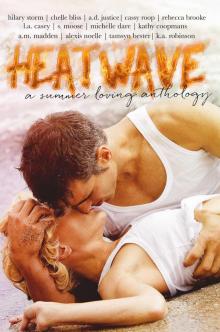 Heat Wave: A Summer Loving Anthology
Heat Wave: A Summer Loving Anthology Fall in Love
Fall in Love Love Under the Mistletoe
Love Under the Mistletoe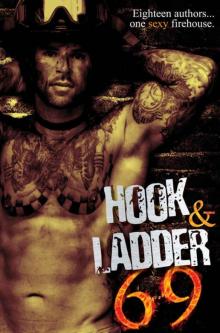 Hook & Ladder 69: Eighteen Authors...One Sexy Firehouse.
Hook & Ladder 69: Eighteen Authors...One Sexy Firehouse. LOL #2 Romantic Comedy Anthology - Volume 2 - Even More All-New Romance Stories by Bestselling Authors (LOL Romantic Comedy Anthology #2)
LOL #2 Romantic Comedy Anthology - Volume 2 - Even More All-New Romance Stories by Bestselling Authors (LOL Romantic Comedy Anthology #2)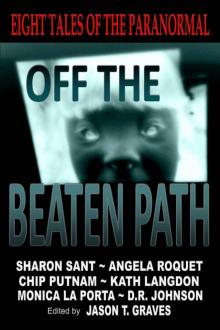 Off the Beaten Path: Eight Tales of the Paranormal
Off the Beaten Path: Eight Tales of the Paranormal![Best New Zombie [3] - Best New Zombie Tales, Vol. 3 Read online](http://i1.bookreadfree.com/i/03/25/best_new_zombie_3_-_best_new_zombie_tales_vol_3_preview.jpg) Best New Zombie [3] - Best New Zombie Tales, Vol. 3
Best New Zombie [3] - Best New Zombie Tales, Vol. 3 The Golden Age of Science Fiction Novels Vol 05
The Golden Age of Science Fiction Novels Vol 05 Alphas of Sin
Alphas of Sin Halloween Spirits: 11 Tales for the Darkest Night
Halloween Spirits: 11 Tales for the Darkest Night Night Shift 2
Night Shift 2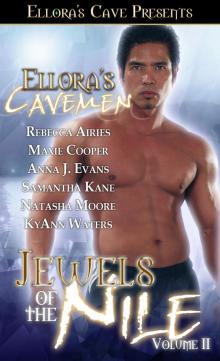 Ellora's Cavemen: Jewels of the Nile II
Ellora's Cavemen: Jewels of the Nile II Hot for the Holidays (21 Holiday Short Stories): A Collection of Naughty and Nice Holiday Romances
Hot for the Holidays (21 Holiday Short Stories): A Collection of Naughty and Nice Holiday Romances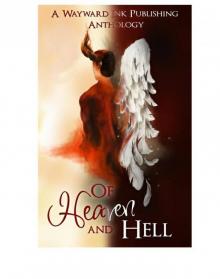 Of Heaven and Hell
Of Heaven and Hell 12 Christmas Romances To Melt Your Heart
12 Christmas Romances To Melt Your Heart '90s Playlist (Romance Rewind #1)
'90s Playlist (Romance Rewind #1) Bleed Blue 69: Twenty-Five Authors…One Sexy Police Station
Bleed Blue 69: Twenty-Five Authors…One Sexy Police Station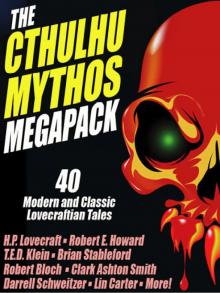 The Cthulhu Mythos Megapack (40 Modern and Classic Lovecraftian Tales)
The Cthulhu Mythos Megapack (40 Modern and Classic Lovecraftian Tales)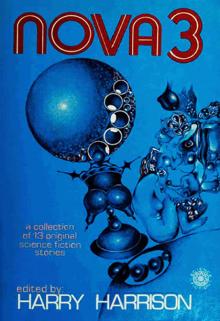 Nova 3
Nova 3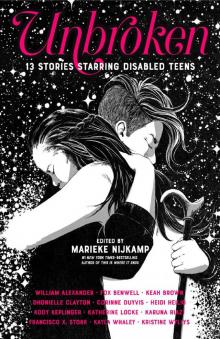 Unbroken: 13 Stories Starring Disabled Teens
Unbroken: 13 Stories Starring Disabled Teens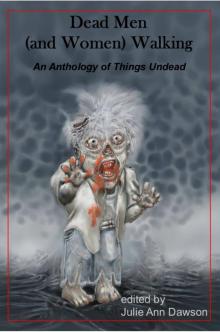 Dead Men (and Women) Walking
Dead Men (and Women) Walking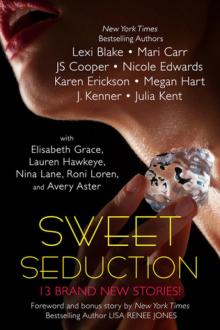 Sweet Seduction
Sweet Seduction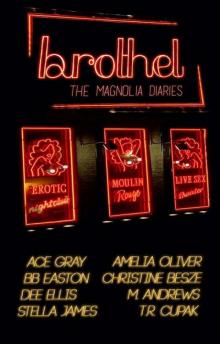 Brothel: The Magnolia Diaries
Brothel: The Magnolia Diaries Rogues (A Boys Behaving Badly Anthology #1)
Rogues (A Boys Behaving Badly Anthology #1) Best New Zombie Tales, Vol. 3
Best New Zombie Tales, Vol. 3![The Hellfire Bo [1] - The Hellfire Book of Beltane Volume One Read online](http://i1.bookreadfree.com/i1/04/06/the_hellfire_bo_1_-_the_hellfire_book_of_beltane_volume_one_preview.jpg) The Hellfire Bo [1] - The Hellfire Book of Beltane Volume One
The Hellfire Bo [1] - The Hellfire Book of Beltane Volume One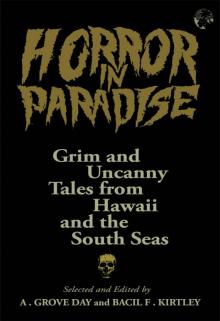 Horror in Paradise
Horror in Paradise Time Travel Omnibus Volume 1
Time Travel Omnibus Volume 1 More Than Words: Stories of Courage
More Than Words: Stories of Courage River Walk: Ten Kinky Collaborations
River Walk: Ten Kinky Collaborations F*cking Awkward
F*cking Awkward Hearts of England
Hearts of England The Golden Age of Science Fiction Novels Vol 03
The Golden Age of Science Fiction Novels Vol 03 Drunk in Love
Drunk in Love Up and Coming: Stories by the 2016 Campbell-Eligible Authors
Up and Coming: Stories by the 2016 Campbell-Eligible Authors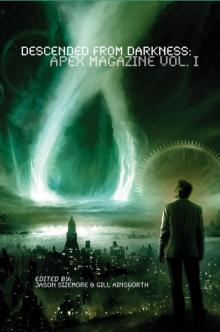 Descended from Darkness: Apex Magazine Vol I
Descended from Darkness: Apex Magazine Vol I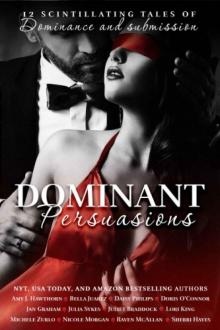 Dominant Persuasions Anthology: 12 Tales of D/s, Where Mastery Meets Passion
Dominant Persuasions Anthology: 12 Tales of D/s, Where Mastery Meets Passion The Golden Age of Science Fiction Novels Vol 04
The Golden Age of Science Fiction Novels Vol 04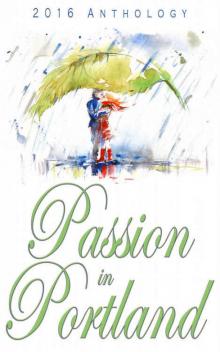 Passion in Portland 2016 Anthology
Passion in Portland 2016 Anthology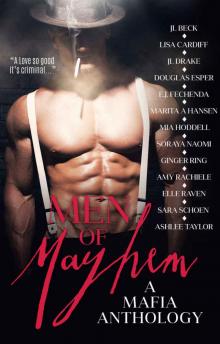 Men of Mayhem
Men of Mayhem The Dirty Anthology
The Dirty Anthology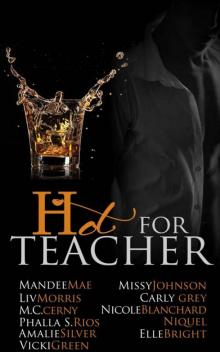 Hot For Teacher
Hot For Teacher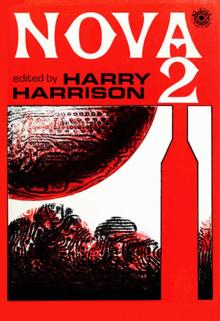 Nova 2
Nova 2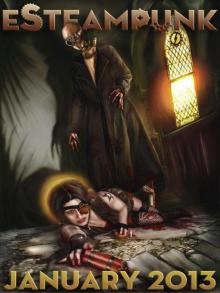 eSteampunk Vol. 01 No. 03
eSteampunk Vol. 01 No. 03 Afternoon Tea Mysteries Vol Three
Afternoon Tea Mysteries Vol Three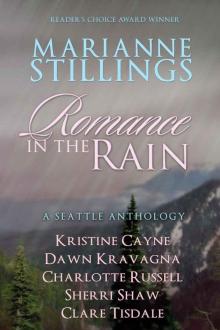 Romance in the Rain
Romance in the Rain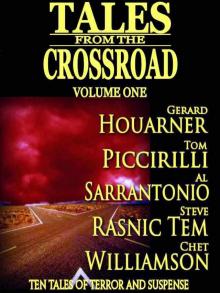 Tales From the Crossroad Volume 1
Tales From the Crossroad Volume 1 A Very Alpha Christmas
A Very Alpha Christmas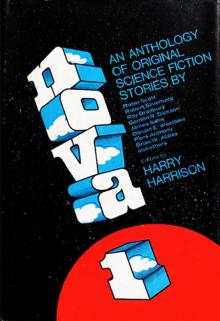 Nova 1
Nova 1 Once: A Collection of Sinfully Sexy and Twisted Tales
Once: A Collection of Sinfully Sexy and Twisted Tales Nuts About You: A Testicular Cancer Anthology
Nuts About You: A Testicular Cancer Anthology From the Street (shadowrun stories)
From the Street (shadowrun stories) Box of 1Night Stands: 21 Sizzling Nights
Box of 1Night Stands: 21 Sizzling Nights Descended from Darkness: Vol II
Descended from Darkness: Vol II Pink Shades of Words: Walk 2016
Pink Shades of Words: Walk 2016 The Art of Taking Chances
The Art of Taking Chances The Butterfly Box_A SASS Anthology
The Butterfly Box_A SASS Anthology Harlan County Horrors
Harlan County Horrors![Afternoon Tea Mysteries [Vol Three] Read online](http://i1.bookreadfree.com/i2/04/12/afternoon_tea_mysteries_vol_three_preview.jpg) Afternoon Tea Mysteries [Vol Three]
Afternoon Tea Mysteries [Vol Three] The Golden Age of Science Fiction Novels Vol 02
The Golden Age of Science Fiction Novels Vol 02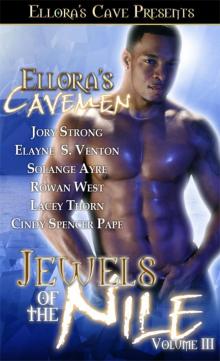 Ellora's Cavemen: Jewels of the Nile III
Ellora's Cavemen: Jewels of the Nile III